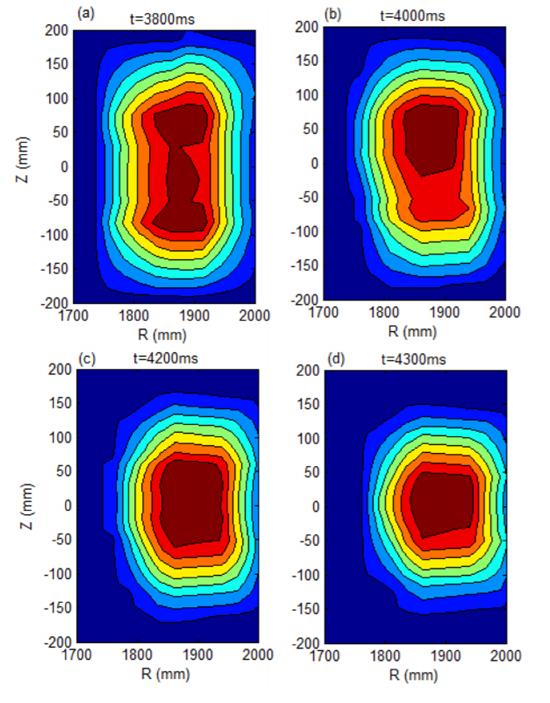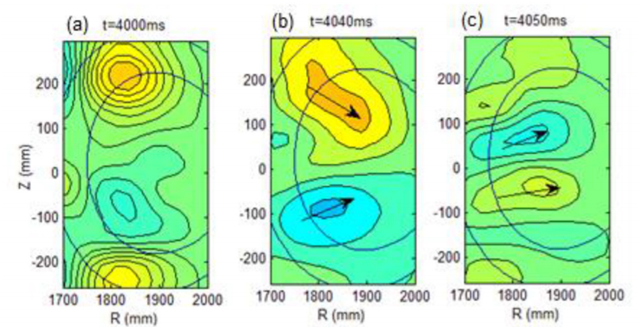
Scientists unveiled Iron's transport and macro-disturbance in R-Z plain using GEM camera in the dominant electron heating scenario on EAST.
This work was done by LI Erzhong and his team with Institute of Plasma Physics, Hefei Institutes of Physical Science and was published in Nuclear Fusion.
Affected by electron kinetics, impurity transport and disturbance vary with the ratio of electron ion temperature, thus to degrade plasma confinement.
During experiments, radio frequency wave is used to heat electron which, after being heated, will produce strong bremsstrahlung. And at the same time, the heavy impurity line radiation reaches the soft X-ray range.
To find the secrets behind, scientists used GEM to help. GEM tomography has the advantages in macro-disturbance and impurity transport analysis for it does not rely on the equilibrium configuration.
The team found the contribution of high ionized iron to the GEM counting rate increased significantly when electron temperature was ~3 keV.
In addition, during the transition from high confinement ELM-free to ELMy and when the electron temperature profile was asymmetrical inside and outside, the elongated macro-disturbance was above and below the middle plane which drove the impurity and energy to transport to the low field side, decreasing the core impurity concentration and temperature gradient, and then to degrade plasma confinement performance.
This work is supported by Youth Innovation Promotion Association of the Chinese Academy of Sciences and the National Natural Science Foundation.

Iron’s profile in the dominant electron heating scenario (Image by LI Erzhong)

Macro-disturbance in R-Z plane (Image by LI Erzhong)

86-10-68597521 (day)
86-10-68597289 (night)

52 Sanlihe Rd., Xicheng District,
Beijing, China (100864)

